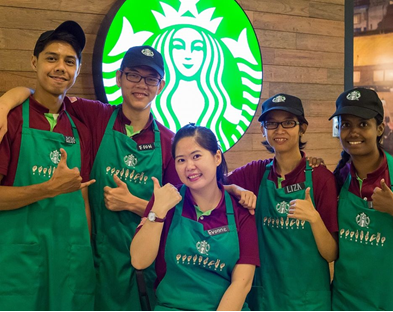613Views

Employer Branding – A value insinuating concept
It is not a lesser-known fact that every and any agency associated with an institution, be it employees, consumers or investors, look for something which has a deeper significance than just quality products, returns and pay slips. With every spin of the Earth around its axis, the emphasis on creating a brand value for any organization is much more than just catchy promotions or curating ads with powerful messages. It is believed to give an understanding of the organization’s purpose and what it stands for. The reputation of the company is the force by which it is perceived by different parties that are linked with it and how they communicate about it to others.
In the era of organizational brands, consumers are more concerned with what the company represents, than the product itself. They prefer brands that serve some purpose to society rather than how the product is positioned in the market. Organizations that showcase greater institutional values are bound to attract more consumers than their counterparts. This increases consumer loyalty and buyers don’t shy away from opting for different product lines of the same organization. It eventually becomes an identity of the organization. The dedication and conviction with which an organization aligns its product brands with its purpose, the services it provides, the culture it embraces, and the regard it has for its employees, defines its willingness to stamp its position on the brand chart, attracting customers.
Companies like Starbucks, Ikea, Nike, Apple, etc., have become household names that splatter consistency in their behavior and reflect commitment towards employees, society, consumers, and stakeholders through their actions. They are not just company names; they are a brand in itself.
With an increasing emphasis on organizational branding, the subject of Employer branding is also gaining recognition. The top managers and leaders are pushing focus on building an employer brand, because of the undeniable advantage it brings to the workplace as a whole. The not so questionable interdependence of both these aspects makes it a corporation responsibility to possess a deep-rooted employer brand and put an end to the misconception of it being just the HR team’s job.
Employer brand is correlated with your past, current and future employees. It is them who decide the brand worth of the employer. Hence, in this competitive job market, where every organization wants the best talent to join their team, having a positive employer brand is always recommended. Attracting the top talent, always was, and always will be one of the top priorities. Apart from wanting to get paid for what they deserve, employees look for benefits, opportunities, the culture, how they are treated by their managers, seeking for a better employee experience, they look to align their purpose with that of their employer. It has become increasingly important for employees to find sense in what they do, beyond their designated tasks. This makes it crucial for employers to share their purpose with their employees.
Your employees are your fastest messengers. They hold the potential to make or break your brand. With social media powering through all segments and arenas, it is easy for someone to share their experience with an organization to a larger audience, which can defame or uplift its reputation. Happy and satisfied employees are more likely to attract new talent and retain the existing one. Thus, increasing the retention rate, along with making an impactful impression for potential candidates. A good employer brand, using LinkedIn or other social media networks, can spread the word for requirement or even directly connect to candidates.
In a recent event where the attrition rate of Cognizant, rose up to 31% in 2021, it stated that it had to lose business due to inability to hire talent. The company has also lost eminent leaders, who were a part of the organization for decades. The company further plans to revise compensation plans, promote employees and would implement job rotations, to retain its existing talent. Due to talent war and better offers from the competitors, Cognizant failed to keep up with its employer brand. However, the company has decided to hire a pool of 1,00,000 laterals in 2021 to cope with the attrition and onboard approximately 30,000 fresh graduates for 2021 and 45,000 fresh graduates in 2022.
To avoid issues pertaining to this area, employers can design a proper employer value proposition. An EVP is employee centric and offers employees the motivation to continue working for an organization or accept the offer. It includes the company’s management style, career development, quality of work, transparency with the employees, work-life balance, job security, recognition, opportunities, etc. You can always re-design and reconstruct an EVP based on the response you receive. Organizations can also formulate feedback forms and circulate them in timely manner, to understand incompetence and bridge the gap between the employer and the employee. A healthy work environment assists in recruiting, when it proves to candidates that your company is an ideal place to spend their talent and efforts, and makes the process cost efficient.
As L. Branham & M. Hirschfeld rightly quoted, “Becoming a better place to work is not easy.” However, if we keep innovating policies and practices according to the need of the hour, it is eventually going to benefit the organization and increase business value, making it a brand name in the employment market.
At Vivekanand Business School (VBS Mumbai), future HR professionals are trained not only in textbook theory but also in strategic thinking that aligns business needs with people practices. In a rapidly evolving talent ecosystem, employer branding is no longer optional—it is integral. VBS, one of the best PGDM colleges in Mumbai, ensures that its students grasp this idea early on.
Through the PGDM in HR specialization, students learn how culture, leadership, and people management influence an organization’s external and internal reputation. Modules like Organizational Behavior, Talent Acquisition, Employer Value Proposition (EVP) Development, and Employee Engagement strategies help students understand how employer branding plays a pivotal role in employee retention and acquisition.
The Vivekanand PGDM program also includes experiential learning components such as live projects, HR conclaves, industry mentorship, and internship opportunities that expose students to real-time employer branding practices adopted by companies across sectors.
Additionally, the school’s strong corporate relations, consistent placement records, and focus on soft skills development help enhance its own employer brand. Recruiters from leading firms in FMCG, BFSI, consulting, and IT sectors regularly partner with VBS Mumbai due to its commitment to grooming industry-ready professionals.
What makes VBS truly stand out is its focus on value-driven education. It doesn’t just train students to work in companies—it prepares them to build cultures. The PGDM curriculum empowers students to design inclusive policies, lead with empathy, and cultivate environments that promote innovation and well-being.
Whether a student wants to become a talent acquisition specialist, HRBP, or work in corporate communication, VBS Mumbai provides the right platform with updated pedagogy, expert faculty, and access to diverse industry networks.
Rithika Rao
PGDM Batch 2020-2022
Vivekanand Business School

